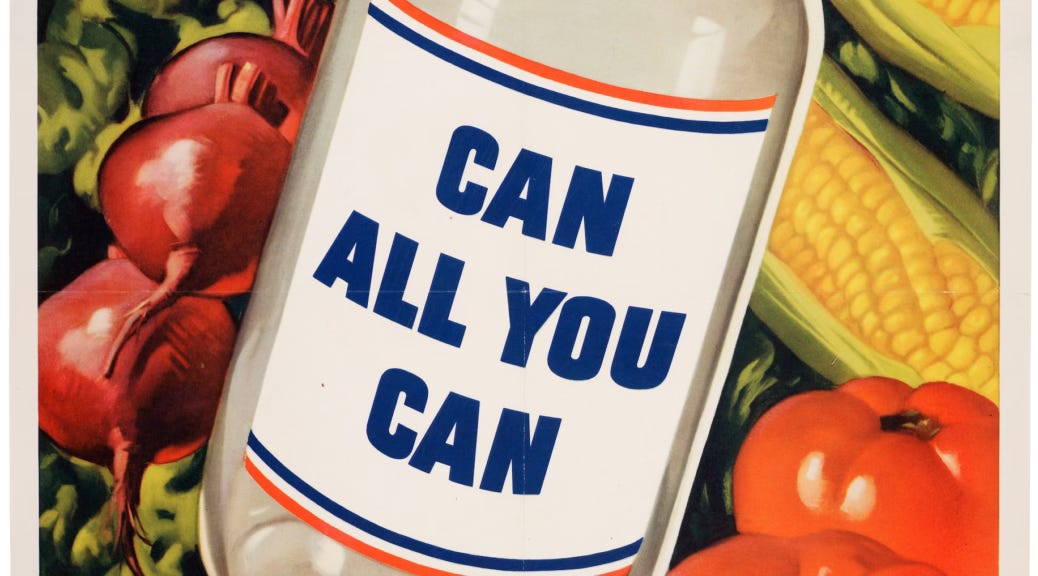Introducing FOOD AND WAR
Our Spring 2025 issue, guest edited by Vanesa Miseres, with our own Jessica Clark
Introduction
In an era marked by the detached violence of drone warfare, where international conflicts are often debated and seemingly resolved on social media or in a simple tweet, it becomes easy to overlook the fundamental role of bodies and their sustenance in shaping the everyday realities of wartime. Yet, as this special issue of The Recipes Project powerfully illustrates, food and war are inextricably linked, revealing profound histories of survival, oppression, and resistance.

Drawing on the assertion that both food and war are inherently political, these contributions delve into the multifaceted relationship between the two. Often perceived as opposing forces—domestic concerns versus foreign policy, nourishment against weaponry—food and war instead emerge here as a dual lens through which we can examine the priorities and character of societies in crisis. This issue moves beyond viewing food solely as a material necessity, revealing its potent function as a narrative tool that exposes the stark intersections of hunger, rationing, and what some scholars term “necropolitics” — the ways in which power dictates who lives and who dies. Indeed, as Lawrence H. Keeley argues, food is essential for the very undertaking of war, and the means of its production often become primary targets. Conversely, hunger itself has been deployed as a devastating “weapon of war,” leaving countless regions grappling with food insecurity and outright starvation.
Additionally, war often catalyzes significant shifts in food technologies and practices. The development of dehydration and freezing techniques in Nazi Germany to provision its war machine, the reorganization of labor with women taking on agricultural roles in victory gardens across the United States or in the agricultural production of postwar Paraguay, the unexpected sight of men cooking at the front lines, and the widespread adoption of canning in the US—a change that profoundly shaped the post-war food industry—all underscore this transformative power. Wartime scarcity also spurred ingenious adaptations, such as the creative substitutions born from rationing in World War II Europe or more recent initiatives like World Central Kitchen, which aims to provide nutritious meals to those affected by conflicts around the world.
Moreover, food served as a vital tool for resistance, from secretly shared recipes in concentration camps to the deliberate use of cooking as a means of cultural preservation in exile or the oral histories registered in a cookbook. As noted in Food and War in Twentieth-Century Europe, an adequate diet is crucial not only for sustaining armies but also for maintaining civilian health and morale in times of total war. Furthermore, a focus on gender and race within these wartime foodscapes reveals how women and marginalized groups navigated trauma and asserted agency through culinary practices.
From this transnational and transhistorical vantage point, a central theme emerges: food acts as a powerful force that can simultaneously unite and divide, sustain and deprive, and yet also spark remarkable hope and creativity. Beyond its material and social dimensions, food carries significant symbolic weight in shaping and contesting wartime narratives. Recipes become more than mere instructions; they function as eloquent tools for keeping and shaping memory and identity in the face of profound loss.
This Spring issue of The Recipes Project offers readers an insightful selection of articles that explore these critical intersections of food and war. Featuring original research alongside compelling reflection pieces, the contributions draw on diverse disciplinary perspectives, including anthropology, history, literary studies, journalism, and creative writing. The featured case studies—ranging from the experiences of the WWII Indian Army and early 20th-century Paraguay to the famines in Biafra (1967-1970), the culinary landscape of the Spanish Civil War, the food crisis in Venezuela (2014-15) and Gaza displacement camps, the perceptive wartime and avant-garde photography of Lee Miller, the sustenance strategies of the US Civil War, the hardships faced in 1980s Mozambique, and the upheaval in 1852 China—collectively underscore the significance of this theme.
In closing, while acknowledging the profound suffering inherent in wartime food insecurity, M.F.K. Fisher’s words from How to Cook a Wolf (1942) offer a poignant reminder: “You can still live with grace and wisdom, thanks partly to the many people who write about how to do it…and partly to your own innate sense of what you must do with the resources you have, to keep the wolf from sniffing too hungrily through the keyhole.” Written during the shortages of World War II to inspire courage and resourcefulness, Fisher’s sentiment continues to resonate in times of both scarcity and abundance. By continuing to write, reflect, and share these stories, we might find or offer solace in times of need, remembering that while the threat of the “wolf” may always linger, the collective knowledge and ingenuity embedded within our foodways offer a powerful means of sustenance and even, perhaps, a way to “cook it.”
—Vanesa Miseres, Guest Editor
In this Issue:
“Of Rodents, Stockfish, and Win-the-War Soup: Surviving Starvation in Biafra,” by Enemchukwu Nnaemeka
“Curry Goes to War: Indian Army Field Rations in World War II,” by Pradeep Barua
“Remembering Francisco Solano López’s Foodways in Paraguay,” by Bridget María Chesterton
Publishing on May 15
“Anguish as a Form of Resistance” in civil war Spain, by Yanet Acosta
“War and Food” in the life of war correspondent and chef Lee Miller, by Karina Elizabeth Vázquez
“Cooking as Survival and Resistance” in Gaza’s displacement camps, by Noah Atef
Publishing on May 22
“Food, Community, and Resistance in Hyperinflationary Venezuela,” by Oriele Benavides
“Ersatz Coffee and Confederate Nationalism during the American Civil War,” by Anne Sarah Rubin
Publishing May 29
“Food Uncertainties in 1980s Mozambique,” by Kathleen Sheldon
“Expedient Recipes for Survival” in Nineteenth-Century China, by Chang Xu



